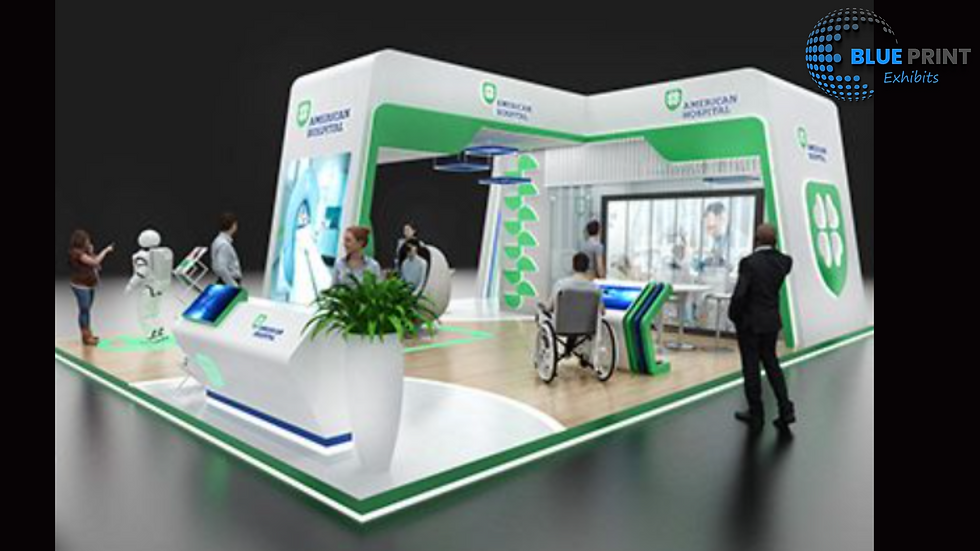Inside the World of Modern Exhibition Stand Builders
- Elisa Johnson
- Jul 9
- 3 min read

Trade shows have long been a platform for businesses to connect with clients, showcase innovations, and boost brand visibility. However, the expectations from exhibition spaces have changed dramatically in recent years. Today’s exhibition stands are more than physical structures—they are storytelling platforms, crafted with precision and designed for experience. The role of an Exhibition Stand Builder in Hamburg exemplifies this shift, highlighting how creativity, functionality, and brand strategy now intertwine in this evolving field.
The Evolution of Stand Building
Gone are the days when basic booths with banners and brochures dominated trade show floors. Modern exhibition stand builders are tasked with creating immersive environments that captivate audiences and express a brand’s identity. These structures must be visually appealing, user-friendly, and technologically advanced to meet the high expectations of today’s trade show attendees.
Stand builders now operate at the crossroads of design, architecture, and marketing. They must understand not just construction but also brand messaging, user experience, and spatial planning. Every element—from lighting and materials to layout and signage—is carefully chosen to enhance engagement.
Technology: A Game Changer
One of the biggest driving forces behind the transformation of stand building is technology. Tools such as 3D visualization, augmented reality, and virtual walkthroughs have become standard in the design phase. These innovations allow clients to see exactly how their stand will look and function before construction even begins.
Additionally, stand builders use software for space planning, workflow management, and material estimation to ensure projects are efficient and cost-effective. The use of digital fabrication techniques like CNC routing and laser cutting also brings precision and creativity to custom designs.
Sustainability in Stand Design
Sustainability has evolved from a mere buzzword into an essential requirement. Exhibitors and builders alike are becoming increasingly conscious of their environmental impact. Many exhibition stand builders now prioritize reusable materials, modular designs, and eco-friendly elements to reduce waste. This approach not only helps the environment but also saves money in the long run, as parts of the stand can be repurposed for future events.
Some builders incorporate energy-efficient lighting, recyclable graphics, and sustainably sourced materials as part of their green initiatives. This aligns with the growing demand from clients who value corporate social responsibility.
Project Management and Coordination
Behind every successful exhibition stand is a team of professionals managing logistics, timelines, and client expectations. From concept to dismantling, stand builders must coordinate with various stakeholders including event organizers, suppliers, transporters, and brand representatives.
This process involves detailed scheduling, compliance with venue regulations, and often, navigating international shipping and customs procedures. For instance, an Exhibition Stand Builder in Hamburg must align with both the global standards of international clients and the local regulations of German exhibition venues.
Client Collaboration and Customization
Modern stand builders work closely with clients to co-create unique and effective stand solutions. The process often begins with mood boards and sketches, progressing to 3D renders and detailed construction plans. Throughout the journey, client feedback is essential to ensure the final product aligns with the brand’s goals and messaging.
Customization is key. No two clients are alike, and their stands should reflect that. Builders are expected to deliver tailored designs that embody brand values while addressing functional needs like foot traffic flow, storage, meeting areas, and digital integration.
Skills and Training in the Modern Era
The expertise of today’s exhibition stand builders extends beyond construction skills. Successful professionals often have backgrounds in industrial design, architecture, engineering, or event production. Continuous learning is vital, especially with the constant evolution of technologies, materials, and design trends.
Soft skills such as communication, problem-solving, and adaptability are just as important. Trade show environments are fast-paced, and builders must be ready to handle last-minute changes, tight deadlines, and high-pressure scenarios with composure and creativity.
Adapting to Global and Digital Trends
As the world embraces hybrid and virtual events, stand builders are exploring ways to integrate digital experiences into physical spaces. This includes interactive screens, real-time analytics, live-streaming capabilities, and more. Builders who can adapt to this hybrid model will be better positioned to meet the demands of tomorrow’s trade shows.
Additionally, working across international markets means understanding diverse cultural preferences, spatial regulations, and logistical challenges. Builders who can navigate this complexity provide greater value to clients seeking global reach.
Conclusion
The world of exhibition stand building is dynamic, collaborative, and increasingly driven by innovation. Today’s builders do much more than erect booths—they craft environments that bring brands to life, foster engagement, and deliver measurable impact. The expertise of an Exhibition Stand Builder in Germany is essential not only for constructing stands but also for guiding brands through every stage of the exhibition process. As the industry continues to evolve, these professionals will remain at the forefront of shaping meaningful and memorable trade show experiences.




Comments